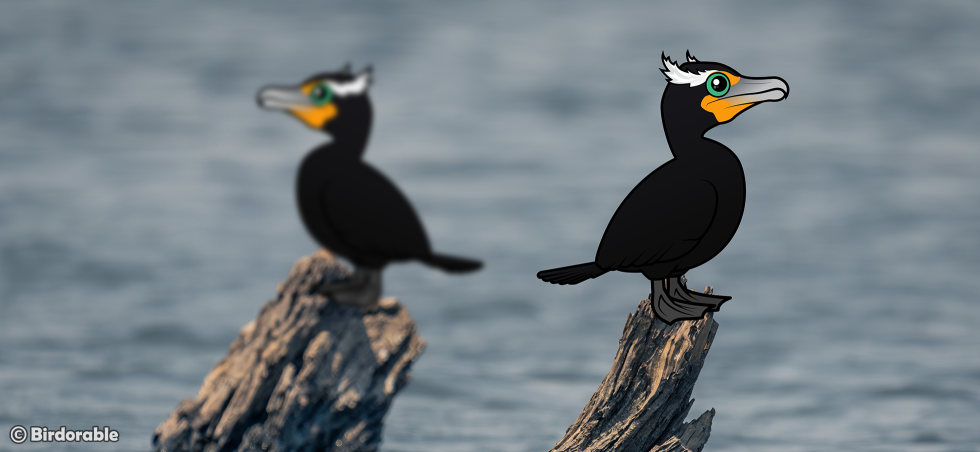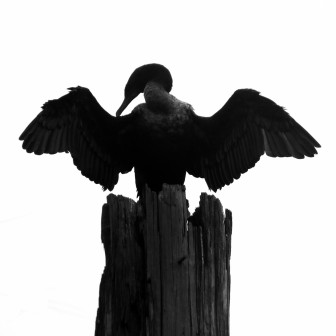Species Profile
Double-crested Cormorants Species Profile: Habitat, Behavior, and More

The Double-crested Cormorant is a fascinating waterbird found across North America. With its long neck, hooked bill, and striking turquoise eyes, this bird is both elegant and efficient. It gets its name from the two small tufts, or "crests," of feathers that appear on adult birds during the breeding season. These crests are typically black but appear as white crests in Alaskan birds, like our cartoon individual. The crests can be subtle and black ones can be hard to see at a distance.
This species is a skilled diver, relying on its webbed feet to propel itself underwater in search of fish. Unlike many other waterbirds, the Double-crested Cormorant does not have fully waterproof feathers (they produce less effective preen oil). This may seem like a disadvantage, but it actually helps the bird dive deeper and stay submerged for longer periods. However, after a fishing session, the cormorant must perch with its wings spread wide to dry in the sun—a characteristic pose that makes them easy to recognize.

Double-crested Cormorant drying its wings
Double-crested Cormorants are social birds, often found in groups on lakes, rivers, and coastal areas. They nest in colonies, sometimes with hundreds of pairs sharing the same site. Their nests, made of sticks and lined with softer materials, are built in trees, on the ground, or even on artificial structures like channel markers. During breeding season, the adult birds develop bright orange-yellow facial skin, adding to their striking appearance.
Though they were once threatened by pollution and habitat destruction, Double-crested Cormorants have made a strong comeback in recent decades. Their population declined sharply in the mid-20th century due to the effects of pesticides like DDT, which weakened eggshells and led to poor reproductive success. Conservation efforts and legal protections have helped their numbers rebound, and today, they are a common sight across much of their range.
Despite their success, these birds are sometimes viewed as a nuisance by fishermen, as they consume large amounts of fish. However, they play an important role in the ecosystem, helping to maintain balance in fish populations. Their unique adaptations and behaviors make them a fascinating species to observe in the wild.
Next time you’re near a body of water, keep an eye out for a dark, long-necked bird drying its wings in the sun—it just might be a Double-crested Cormorant!





Comments
Leave a comment
Thank you!